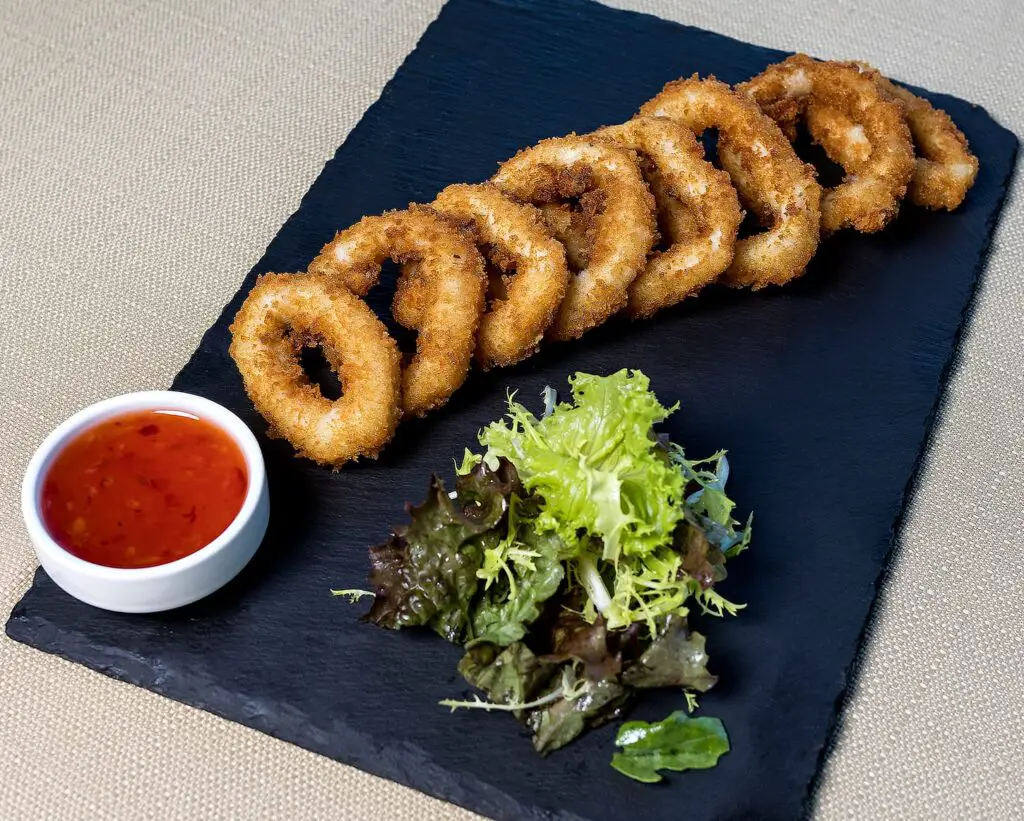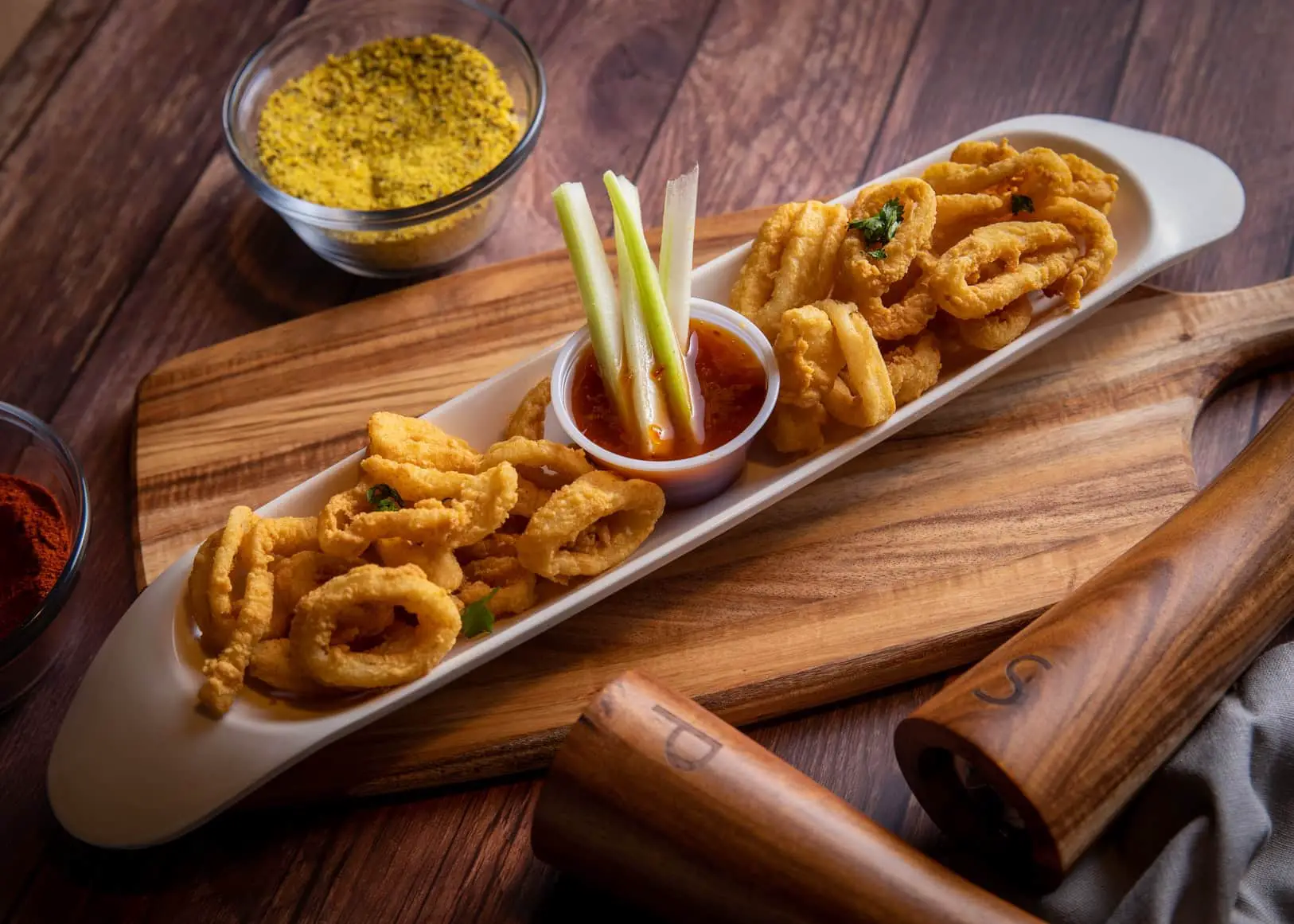Table of Contents
This once declining and exotic-sounding ingredient has undergone a serious resurgence in recent years, spurred on by changing eating habits and the changes to modern dining life. Calamari is, simply put, squid. Borrowed from the Italians, the word Calamari can be translated literally as just squid.
Recipe-wise, you may be familiar with the small rings of fried batter that resemble onion rings, but that is not the only preparation you can find for calamari. In fact, many cultures prefer to stuff the squid with other ingredients and aromatics – but they have to be careful to cook it enough as the skin can be remarkably tough if undercooked. This is one of the best arguments for frying this delicious seafood as oil gets far hotter and more conductive than an oven does.
What Does Calamari Taste Like?
If I were to say it tasted like chicken, I wouldn’t be too far off – but not for the reasons you might think. Squid meat is exceptional at absorbing flavours and aromas, so your quick weeknight marinade can make it taste like anything you like!
Where you really start to see the personality of Calamari is in its texture; described as a ‘tender’ and ‘rubbery food’, you may start to worry and wish you had never tried it, but just like peanut butter could be described as ‘viscous’, it can also be said to be velvety and smooth. Replace rubbery with bouncy and you have a recipe for success.

Even still the texture improves, as when breaded it can be the perfect way to taste a wonderfully tender piece of flavourful meat, all whilst keeping the satisfying crunch that we can all agree improves almost any food.
How to Cook Calamari
For those asking “What is Calamari”, then a brief overview of how to cook calamari might help to properly illustrate exactly what it is you’re eating. The first job in the kitchen is to get yourself a squid.
Whilst in the past you often had to go straight to a fishmonger to get your hands on this tentacled delight, its recent popularity boom has led to most supermarkets stocking at least one preparation of squid, and in the case of some brands, multiple different ways to buy it. We will focus on the squid as that is the most accessible, but if you do happen to find a different cut, just skip ahead to where you need to be.

Now that you finally have a squid in hand, you should slice the body into fairly thin rings – slightly wider than an onion ring. Take care not to cut it too thin or you risk ruining the texture, and similarly, a ring that is too wide will not cook properly and leave you with some really expensive gum.
Next, you have to choose exactly how you want to cook it. Your options are:
- Grilling
- Deep Frying
- BBQ (A favourite over here)
- Broiling
Each of these different methods will produce a similar, yet distinct version of calamari and one you should definitely try at least once in your life.
For those of you that are not particularly squeamish, you can also acquire small squids that are far too little to slice and cook, instead, you can fry them whole and eat them like a little hors d’oeuvre. That is if you want to cosplay the Kraken and his meal.
How To Store Calamari

Storing calamari is relatively effortless, take a freezer bag and a squid, then throw it in the freezer. You have a good couple of months before you have to consider throwing it out, but honestly, I doubt it will last that long. If you are worried about the freezing process affecting the taste or texture of the meat, then worry not! Most fish and seafood has already been frozen on its journey to your local store. In fact, the fresh fish counter at your local supermarket has simply done you the favour of defrosting your meat for you!
If you do decide to keep your squid in the fridge, you probably only have a couple of days to use it before you lose it. And cooked calamari should be enjoyed fresh, especially in the case of fried calamari – nobody likes soggy, cold batter on a squishy piece of meat. Unless you do, in which case you probably are a Kraken after all.










